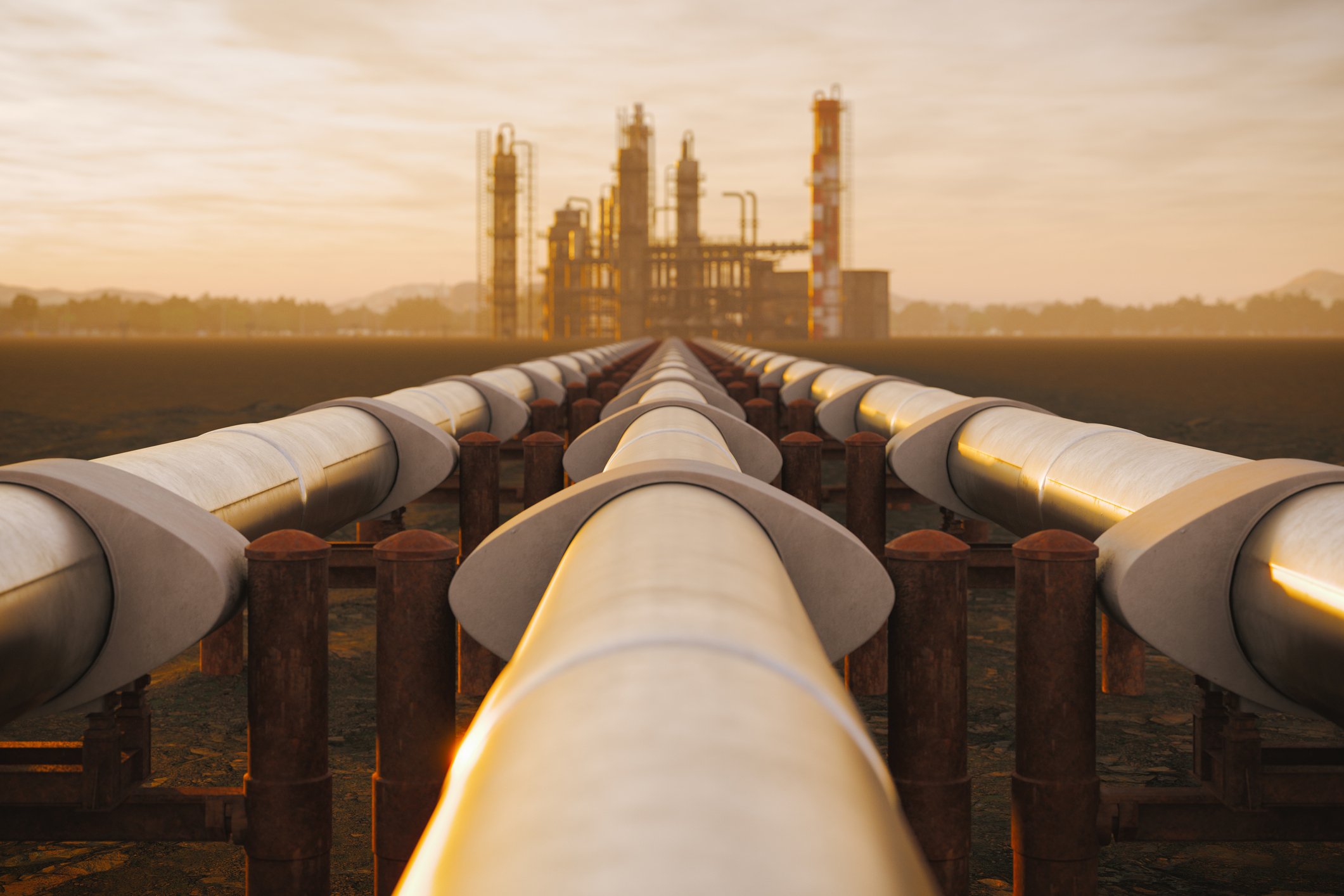Units of Energy Transfer (ET +0.18%) currently sit about 18% below their high from earlier this year. That decline is largely due to short-term headwinds facing the master limited partnership (MLP).
However, the company's headwinds should fade over the next year as stronger long-term tailwinds take hold. That makes its dip look like a great buying opportunity for those with a long-term mindset and are comfortable with receiving the Schedule K-1 Federal Tax Form the MLP sends them each year.

Image source: Getty Images.
Drilling down into the dip
Energy Transfer initially expected to generate between $16.1 billion and $16.5 billion of adjusted earnings before interest, taxes, depreciation, and amortization (EBITDA) this year. This outlook implied that the MLP would grow by 3.9% to 6.5% from last year's level. While that's a solid rate, it's below the double-digit compound annual adjusted EBITDA growth rate the company has averaged since 2020. Growth is slowing because the company has fewer growth catalysts. It hasn't completed a major acquisition in over a year and hasn't finished many growth capital projects.
Unfortunately, the company's growth outlook has deteriorated even further since then. Weaker-than-expected commodity prices now have Energy Transfer expecting its adjusted EBITDA to be at or slightly below the low end of its guidance range.
As a result of this dip, the MLP now trades at the second-lowest valuation in its peer group. At less than 9 times earnings, Energy Transfer is well below its peer-group average of around 12x earnings.

NYSE: ET
Key Data Points
The coming reacceleration
While Energy Transfer hasn't completed very many growth capital projects over the past year, that's about to change. The company is investing $5 billion into growth capital projects this year. Notable projects include the Nederland Flexport NGL expansion and the Hugh Brinson Pipeline. These and other projects are scheduled to enter commercial service by the end of 2026. Given the timing, these projects should begin generating incremental income in 2026 and continue into 2027, supporting a reacceleration in its earnings growth rate.
Meanwhile, even though Energy Transfer hasn't closed an acquisition in over a year, it's about to get a deal-driven boost. It owns a significant stake in fellow MLP Sunoco. As a result, it reports a portion of Sunoco's earnings on its income statement. Sunoco agreed to buy leading international fuels distributor Parkland earlier this year for $9.3 billion. That deal will provide a noticeable boost to Energy Transfer's earnings once it closes.
Adding more fuel to its growth engine
Energy Transfer has lots more growth ahead. It has recently approved several new growth capital projects, which should enter commercial service between 2027 and 2029. The biggest one is the Desert Southwest Expansion project, a large-scale natural gas pipeline project in the Southwest. The $5.3 billion pipeline should enter service by the end of 2029, providing the MLP with growth visibility well into the next decade.
Meanwhile, Energy Transfer has several more growth capital projects under development. The largest is the long-delayed Lake Charles LNG export terminal, which could finally receive approval this year. The MLP is also working on several other natural gas pipeline capacity expansions to support growing demand from data centers and power plants.
Finally, Energy Transfer is in the best financial position in its history. That gives it ample financial flexibility to continue approving new organic expansion projects and make acquisitions as opportunities arise. The company has a long history as a consolidator in the energy midstream sector, often making at least one sizable deal each year.
A great time to buy
With the dip in its unit price, Energy Transfer now trades at an even lower valuation and higher distribution yield (currently 7.6%). That's a very attractive level for a company that's about to experience a growth reacceleration. Investors who buy the dip could see high-octane total returns from here in the coming years.






